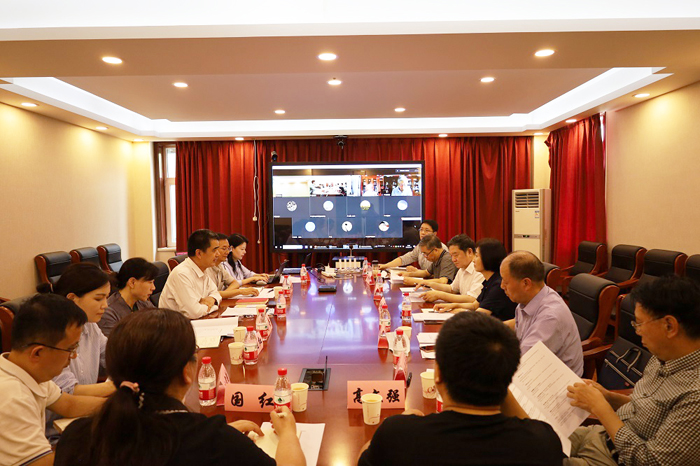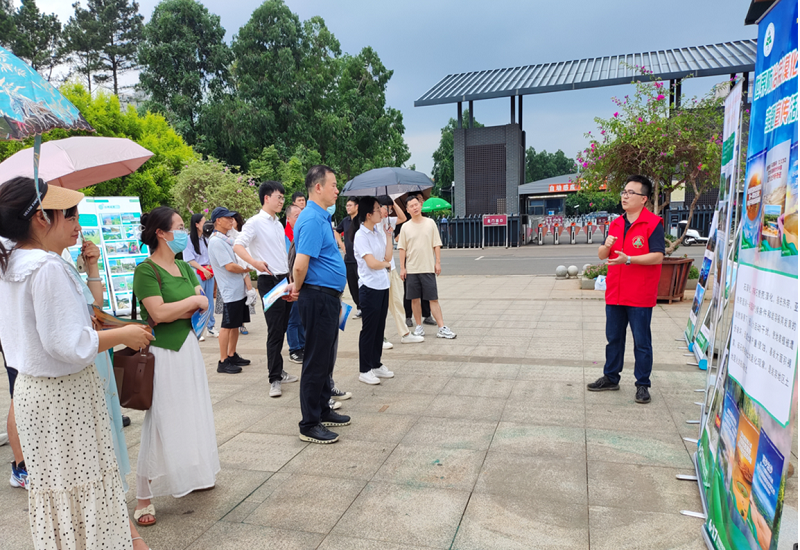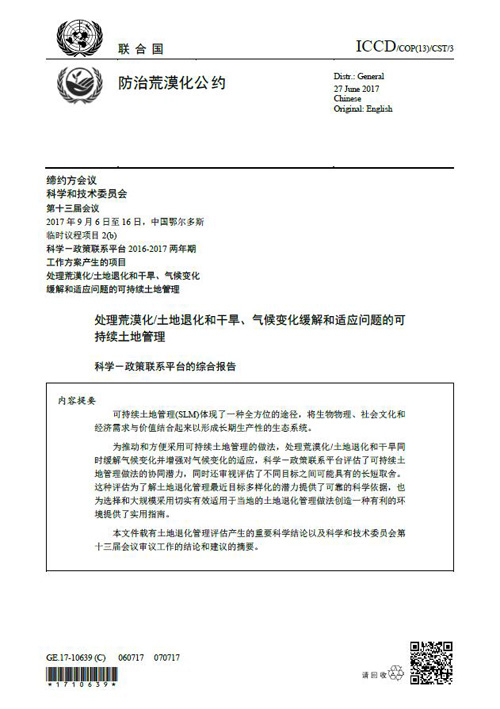
退化林修复研究进展
编号
lyqk009582


中文标题
退化林修复研究进展


作者单位
1. 中国林业科学研究院林业科技信息研究所,北京 100091;
2. 中国林业科学研究院,北京 100091


期刊名称
世界林业研究


年份
2021


卷号
34


期号
5


栏目名称
专题论述


中文摘要
退化林的基本内涵是森林生产力和生态服务功能出现逆向改变。国内外研究表明,过度采伐和外来树种干扰是引发森林退化的重要人为因素之一,而干旱是重要的自然因素之一。退化林修复技术研究主要集中在修复方式选择、乡土树种选育和土壤微生物利用等方面。自然恢复过程高度可变,人工辅助成本较高且效果良莠不齐,在景观水平上可将2种策略互补使用,以提高修复效果,降低实施成本;乡土树种比外来树种有更好的立地适应性且生态风险较小,在大多数情况下应采取自然修复和以乡土树种为主的人工修复相结合的综合修复措施;土壤微生物在增强土壤养分循环和促进植物生长方面具有重要作用,其中固氮微生物是最主要的成员,土壤真菌能够辅助细菌更好地发挥作用,充分利用土壤微生物可以有效促进退化林分的恢复。我国森林退化现状与世界各地森林退化情况基本一致,但退化林的成因有其特殊的历史性。在退化林修复工作中应因地制宜制定修复策略,及时调整抚育间伐措施和财政补贴政策,将森林经营系统化,确保退化林修复效果。


基金项目
中央财政林业科技推广示范项目“退化林修复经营技术示范”([2019]HZT18)


英文标题
Progress of Degraded Forests Restoration Research


作者英文名
Lan Qian, Chen Shaozhi, Wu Keyi, Li Tingting, Lu Ji


单位英文名
1. Research Institute of Forestry Policy and Information, Chinese Academy of Forestry, Beijing 100091, China;
2. Chinese Academy of Forestry, Beijing 100091, China


英文摘要
Fundamentally, the degraded forest refers to those with reversed changes in productivity and ecological service functions. The studies both at home and abroad show that over-logging and the interference of exotic tree species are important artificial drivers of forest degradation while drought is one of the important natural drivers. The research on degraded forest restoration technologies be mainly focused on the restoration method, native species selection and breeding, soil microorganism utilization, etc. With the natural restoration, the final result can be unpredictable, while the manual interference cost remains high and the effects are not always good. Considering the landscape, the 2 methods can be used to supplement each other for better effect and lower cost. Since the native species usually can adapt to sites better and generate less risks than exotic species, the comprehensive restoration measures are usually adopted in most cases, featuring the combination of natural restoration and artificial restoration using native species. Soil microorganisms are important to nutrient cycling and plant growth, of which the fungi can assist the bacterium to function better. Making full use of the soil microorganisms will effectively facilitate the restoration of degraded forests. The forest degradation occurring in China is basically the same as that experienced by the whole world, but is caused by some special historical reasons. In the restoration of degraded forest, restoration strategies should be formulated according to local conditions, the policies in relation to thinning and financial subsidy should be adjusted timely, and forest management should be systematized to ensure the restoration effect.


英文关键词
degraded forest;exotic tree species;drought;natural restoration;artificial restoration


起始页码
50


截止页码
57


投稿时间
2021/3/31


最后修改时间
2021/8/9


作者简介
兰倩,博士,助理研究员,主要从事森林生态管理研究,E-mail:shengminglanqian@sina.com


通讯作者介绍
陈绍志,博士,教授级高级工程师,主要从事林业经济理论与政策、林产品市场与贸易、森林资源与环境经济,E-mail:chensz99@vip.163.com


E-mail
shengminglanqian@sina.com;chensz99@vip.163.com


分类号
S756


DOI
10.13348/j.cnki.sjlyyj.2021.0071.y


参考文献
[1] Food and Agriculture Organization of the United Nations. Global forest reources assessment 2020[R]. 2020.
[2] LONGO M, SAATCHI S, KELLER M, et al. Impacts of degradation on water, energy, and carbon cycling of the Amazon tropical forests[J]. Journal of Geophysical Research-Biogeosciences, 2020, 125(8). DOI:e2020JG005677
[3] BUSTAMANTE M M, ROITMAN I, AIDE T M, et al. Toward an integrated monitoring framework to assess the effects of tropical forest degradation and recovery on carbon stocks and biodiversity[J]. Global Change Biology, 2016, 22(1):92-109.
[4] Aichi Biodiversity Targets. Convention on biological diversity (CBD) [EB/OL]. [2021-01-22]. http://www.cbd.int/sp/targets/.
[5] ARADOTTIR A L, HAGEN D. Ecological restoration: approaches and impacts on vegetation, soils and society[J]. Advances in Agronomy, 2013, 120:173-222.
[6] ASMELASH F, BEKELE T, BIRHANE E. The potential role of arbuscular mycorrhizal fungi in the restoration of degraded lands[J]. Frontiers in Microbiology, 2016, 7:1095. DOI:10.3389/fmicb.2016.01095
[7] JACOBS D F, OLIET J A, ARONSON J, et al. Restoring forests: what constitutes success in the twenty-first century?[J]. New Forests, 2015, 46:601-614.
[8] 张小全, 侯振宏. 森林退化、森林管理、植被破坏和恢复的定义与碳计量问题[J]. 林业科学,2003,39(4):140-144.
[9] 朱教君, 李凤芹. 森林退化/衰退的研究与实践[J]. 应用生态学报,2007,18(7):1601-1609.
[10] On definitions of forest and forest change[R]. Rome: FAO, 2000: 33.
[11] FEARNSIDE P M. Deforestation in Brazilian Amazonia: history, rates, and consequences[J]. Conservation Biology, 2005, 19:680-688.
[12] VIEIRA I C G, TOLEDO P M, SILVA J M C, et al. Deforestation and threats to the biodiversity of Amazonia[J]. Brazilian Journal of Biology, 2008, 68:949-956.
[13] VIEIRA I C G. Land use drives change in amazonian tree species[J]. Anais da Academia Brasileira de Ciencias, 2019, 91(Suppl 3):e20190186. DOI:10.1590/0001-3765201920190186
[14] BARLOW J, LAGAN B O, PERES C A. Morphological correlates of fire-induced tree mortality in a central Amazonian forest[J]. Journal of Tropical Ecology, 2003, 19:291-299.
[15] BRANDO P M, BALCH J K, NEPSTAD D, et al. Abrupt increases in Amazonian tree mortality due to drought–fire interactions[J]. Proceedings of the National Academy of Sciences of the United States of America, 2014, 111:6347-6352.
[16] ALMEIDA C A, COUTINHO A C, ESQUERDO J C D M, et al. High spatial resolution land use and land cover mapping of the Brazilian legal Amazon in 2008 using landsat-5/TM and MODIS data[J]. Acta Amazonica, 2016, 46:291-302.
[17] Monitoramento de Floresta Amaz?nica Brasileira por satélite[EB/OL]. (2021-06-16)[2021-06-25]. http://www.obt.inpe.br/OBT/assuntos/programas/amazonia/prodes.
[18] 席劲松. 外来生物入侵中植物污染及其防控方法[J]. 中国资源综合利用,2010,28(1):34-36.
[19] 李青松. 薇甘菊: 外来物种入侵中国[M]. 北京: 中国青年出版社, 2015.
[20] ABE T, TANAKA N, SHIMIZU Y. Outstanding performance of an invasive alien tree Bischofia javanica relative to native tree species and implications for management of insular primary forests[J]. Peer J, 2020, 23(8):e9573. DOI:10.7717/peerj.9573
[21] PODADERA D S, ENGEL V L, PARROTTA J A, et al. Influence of removal of a non-native tree species Mimosa caesalpiniifolia Benth. on the regenerating plant communities in a tropical semideciduous forest under restoration in Brazil[J]. Environmental Management, 2015, 56(5):1148-58.
[22] LI X, PIAO S, WANG K, et al. Temporal trade-off between gymnosperm resistance and resilience increases forest sensitivity to extreme drought[J]. Nature Ecology and Evolution, 2020, 4(8):1075-1083.
[23] DESOTO L, CAILLERET M, STERCK F, et al. Low growth resilience to drought is related to future mortality risk in trees[J]. Nature Communications, 2020, 11(1):545. DOI:10.1038/s41467-020-14300-5
[24] DANNENMANN M, BIMüLLER C, GSCHWENDTNER S, et al. Climate change impairs nitrogen cycling in European beech forests[J]. Plos One, 2016, 11(7):e0158823. DOI:10.1371/journal.pone.0158823
[25] AUCLAIR A D. A case study of forest decline in western Canada and the adjacent United States[J]. Water, Air and Soil Pollution, 1990, 53:13-31.
[26] FLAKE S W, WEISBERG P J. Fine-scale stand structure mediates drought-induced tree mortality in pinyon-juniper woodlands[J]. Ecological Applications, 2019, 29(2):e01831. DOI:10.1002/eap.1831
[27] XU P, ZHOU T, YI C, et al. Impacts of water stress on forest recovery and its interaction with canopy height[J]. International Journal of Environmental Research and Public Health, 2018, 15(6):1257. DOI:10.3390/ijerph15061257
[28] MCGREGOR I R, HELCOSKI R, KUNERT N, et al. Tree height and leaf drought tolerance traits shape growth responses across droughts in a temperate broadleaf forest[J]. New Phytologist, 2020. DOI:10.1111/nph.16996
[29] MEIRA-JUNIOR M S D, PINTO J R R, RAMOS N O, et al. The impact of long dry periods on the aboveground biomass in a tropical forests: 20 years of monitoring[J]. Carbon Balance and Management, 2020, 15(1):12. DOI:10.21203/rs.2.22656/v1
[30] REID J L, HOLL K D, ZAHAWI R A. Seed dispersal limitations shift over time in tropical forest restoration[J]. Ecological Appliations, 2015, 25(4):1072-1082.
[31] DíAZ-GARCíA J M, LóPEZ-BARRERA F, PINEDA E, et al. Comparing the success of active and passive restoration in a tropical cloud forest landscape: a multi-taxa fauna approach[J]. Plos One, 2020, 15(11):e0242020. DOI:10.1371/journal.pone.0242020
[32] 侯琳. 黄龙山林区封育油松群落结构特征动态研究[D]. 陕西杨凌: 西北农林科技大学, 2004.
[33] HOU L, HOU S. How long should the fully hillside-closed forest protection be implemented on the Loess Plateau, Shanxi, China?[J]. Peer J, 2017, 5:e3764. DOI:10.7717/peerj.3764
[34] ZHENG H, CHEN F L, OUYANG Z Y, et al. Impacts of reforestation approaches on runoff control in the hilly red soil region of Southern China[J]. Journal of Hydrology, 2008, 356:174-184.
[35] LIU X, ZHANG G C, HEATHMAN G C, et al. Fractal features of soil particle-size distribution as affected by plant communities in the forested region of Mountain Yimeng China[J]. Geoderma, 2009, 154:123-130.
[36] ZHANG J T, DONG Y R. Factors affecting species diversity of plant communities and the restoration process in the loess area of China[J]. Ecological Engineering, 2010, 36:345-350.
[37] FIRN J, ERSKINE P D, LAMB D. Woody species diversity influences productivity and soil nutrient availability in tropical plantations[J]. Oecologia, 2007, 154(3):521-533.
[38] KRISHNAN V, ROBINSON N, FIRN J, et al. Without management interventions, endemic wet-sclerophyll forest is transitioning to rainforest in World Heritage listed K'gari (Fraser Island), Australia[J]. Ecology and Evolution, 2019, 9(3):1378-1393.
[39] REID J L, FAGAN M E, ZAHAWI R A. Positive site selection bias in meta-analyses comparing natural regeneration to active forest restoration[J]. Science Advances, 2018, 4(5):eaas9143. DOI:10.1126/sciadv.aas9143
[40] POORTER L, BONGERS F, AIDE T M, et al. Biomass resilience of Neotropical secondary forests[J]. Nature, 2016, 530:211-214.
[41] ROZENDAAL D M A, BONGERS F, AIDE T M, et al. Biodiversity recovery of neotropical secondary forests[J]. Science Advances, 2019, 5(3):eaau3114. DOI:10.1126/sciadv.aau3114
[42] LENNOX G D, GARDNER T A, THOMSON J R, et al. Second rate or a second chance? assessing biomass and biodiversity recovery in regenerating Amazonian forests[J]. Global Change Biology, 2018, 24(12):5680-5694.
[43] CéSAR R G, MORENO V S, COLETTA G D, et al. Early ecological outcomes of natural regeneration and tree plantations for restoring agricultural landscapes[J]. Ecological Applications, 2018, 28(2):373-384.
[44] 徐生旺. 重视乡土灌木树种驯化, 恢复高原原生森林植被[J]. 防护林科技,2008(3):78-79, 99.
[45] CHU S, OUYANG J, LIAO D, et al. Effects of enriched planting of native tree species on surface water flow, sediment, and nutrient losses in a Eucalyptus plantation forest in southern China[J]. Science of the Total Environment, 2019, 675:224-234.
[46] 王芸, 欧阳志云, 郑华, 等. 不同森林恢复方式对我国南方红壤区土壤质量的影响[J]. 应用生态学报,2013,24(5):1335-1340.
[47] LU Y, RANJITKAR S, HARRISON R D, et al. Selection of native tree species for subtropical forest restoration in southwest China[J]. Plos One, 2017, 12(1):e0170418. DOI:10.1371/journal.pone.0170418
[48] BRANCALION P H S, CAMPOE O, MENDES J C T, et al. Intensive silviculture enhances biomass accumulation and tree diversity recovery in tropical forest restoration[J]. Ecological Applications, 2019, 29(2):e01847. DOI:10.1002/eap.1847
[49] ALLISON S D, TRESEDER K K. Climate change feedbacks to microbial decomposition in boreal soils[J]. Fungal Ecology, 2011, 4(6):362-374.
[50] VO?í?KOVá J, BRABCOVá V, CAJTHAML T, et al. Seasonal dynamics of fungal communities in a temperate oak forest soil[J]. New Phytologist, 2014, 201:269-278.
[51] STERKENBURG E, BAHR A, BRANDSTROM DURLING M, et al. Changes in fungal communities along a boreal forest soil fertility gradient[J]. New Phytologist, 2015, 207:1145-1158.
[52] CLEMMENSEN K E, FINLAY R D, DAHLBERG A, et al. Carbon sequestration is related to mycorrhizal fungal community shifts during long-term succession in boreal forests[J]. New Phytologist, 2015, 205:1525-1536.
[53] TIAN J H, POURCHER A M, BOUCHEZ T, et al. Occurrence of lignin degradation genotypes and phenotypes among prokaryotes[J]. Applied Microbiology and Biotechnology, 2014, 98:9527-9544.
[54] RAMACHANDRAN A, RADHAPRIYA P. Restoration of degraded soil in the Nanmangalam reserve forest with native tree species: effect of indigenous plant growth-promoting Bacteria[J]. Scientific World Journal, 2016. DOI:10.1155/2016/5465841
[55] RADHAPRIYA P, RAMACHANDRAN A, PALANI P. Indigenous plant growth-promoting bacteria enhance plant growth, biomass, and nutrient uptake in degraded forest plants[J]. 3 Biotech, 2018, 8(3):154. DOI:10.1007/s13205-018-1179-1
[56] RADHAPRIYA P, RAMACHANDRAN A, ANANDHAM R, et al. Pseudomonas aeruginosa RRALC3 enhances the biomass, nutrient and carbon contents of Pongamia pinnata seedlings in degraded forest soil[J]. Plos One, 2015, 10(10):e0139881. DOI:10.1371/journal.pone.0139881
[57] WALKER J K, COHEN H, HIGGINS L M, et al. Testing the link between community structure and function for ectomycorrhizal fungi involved in a global tripartite symbiosis[J]. New Phytologist, 2014, 202:287-296.
[58] PODILA G K, SREEDASYAM A, MURATET M A. Populus rhizosphere and the ectomycorrhizal interactome[J]. Critical Reviews in Plant Sciences, 2009, 28:359-367.
[59] BONITO G, REYNOLDS H, ROBESON II M S, et al. Plant host and soil origin influence fungal and bacterial assemblages in the roots of woody plants[J]. Molecular Ecology, 2014, 23:3356-3370.
[60] UROZ S, CALVARUSO C, TURPAULT M P, et al. Effect of the mycorrhizosphere on the genotypic and metabolic diversity of the bacterial communities involved in mineral weathering in a forest soil[J]. Applied and Environmental Microbiology, 2007, 73:3019-3027.
[61] BASHAN Y, DE-BASHAN L E. Microbial populations of arid lands and their potential for restoration of deserts[M]//DION P.Soil biology and agriculture in the tropics. Berlin: Springer, 2010: 109-137.
[62] BASHAN Y, SALAZAR B G, MORENO M, et al. Restoration of eroded soil in the Sonoran Desert with native leguminous trees using plant growth-promoting microorganisms and limited amounts of compost and water[J]. Journal of Environmental Management, 2012, 102:26-36.
[63] LLADóS, LóPEZ-MONDéJAR R, BALDRIAN P. Forest soil bacteria: diversity, involvement in ecosystem processes, and response to global change[J]. Microbiology and Molecular Biology Reviews, 2017, 81(2):e00063-16. DOI:10.1128/MMBR.00063-16.
[64] VON REIN I, GESSLER A, PREMKE K, et al. Forest understory plant and soil microbial response to an experimentally induced drought and heat-pulse event: the importance of maintaining the continuum[J]. Global Change Biology, 2016, 22(8):2861-2874.


发布日期
2021-08-10


PDF全文
浏览全文


-
相关记录
更多
- 我国天然林保护修复研究概述 2022
- 持续高温晴热天气对武汉市区园林植物的影响 2023
- 城市生态空间再野化及其实施途径探讨 2022
- ‘哈伯’南天竹在三门的适应性初探 2020
- 干旱半干旱区当归不同育苗方式对比研究 2019
- 江门主要外来树种的植物区系特征分析 2018
 打印
打印





